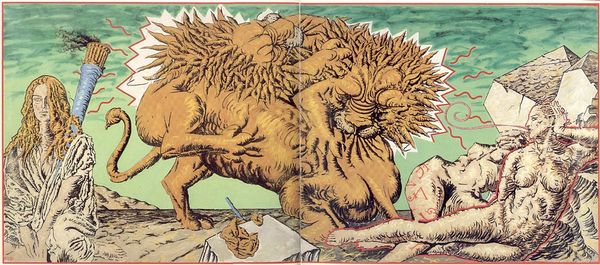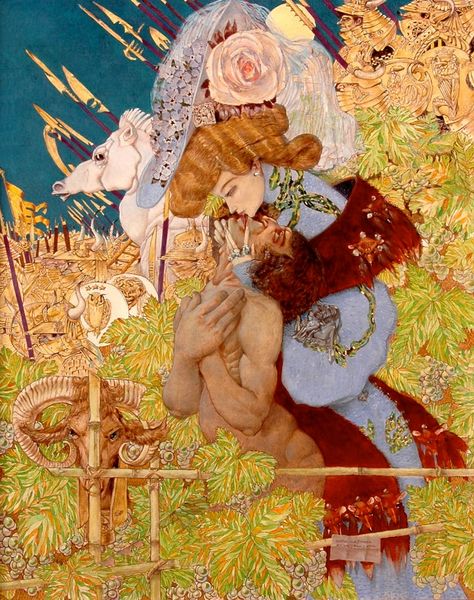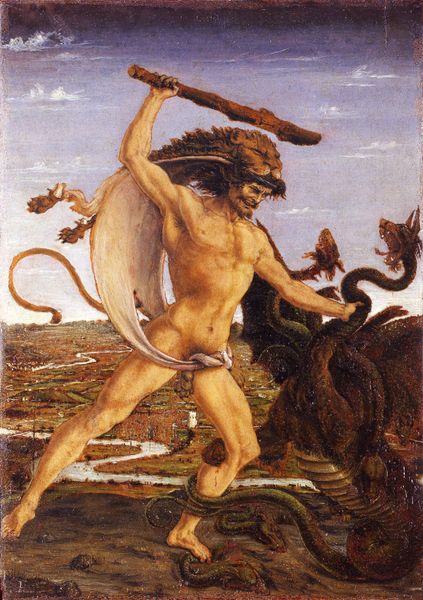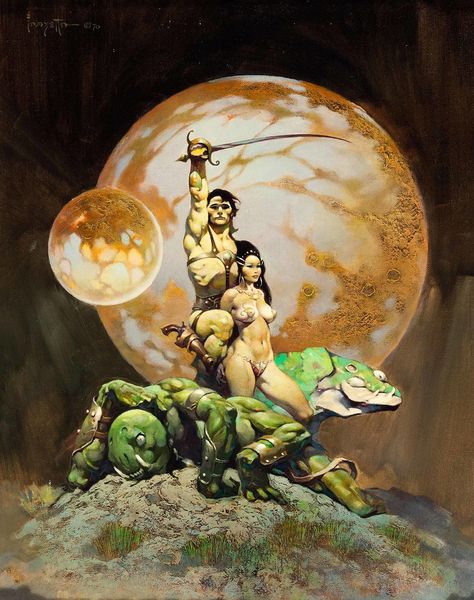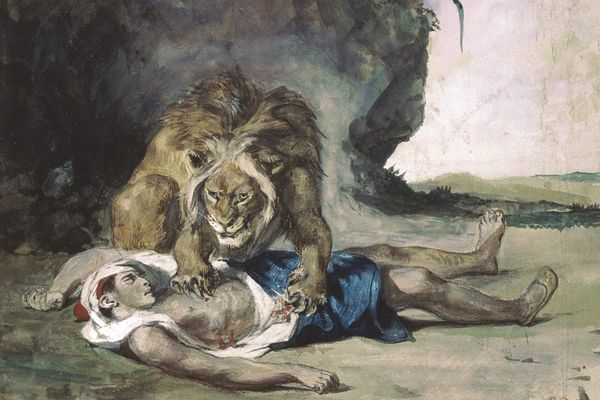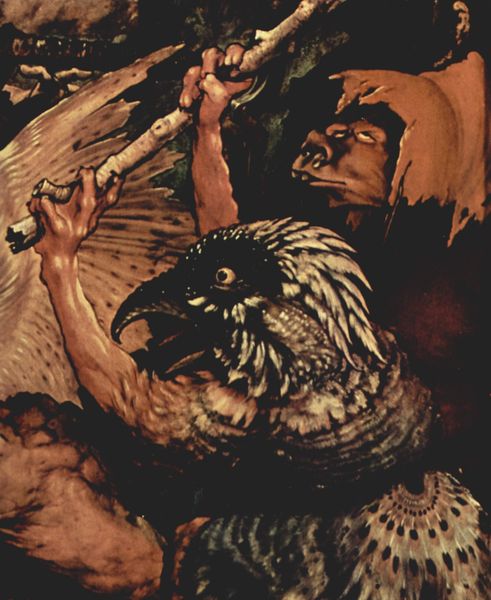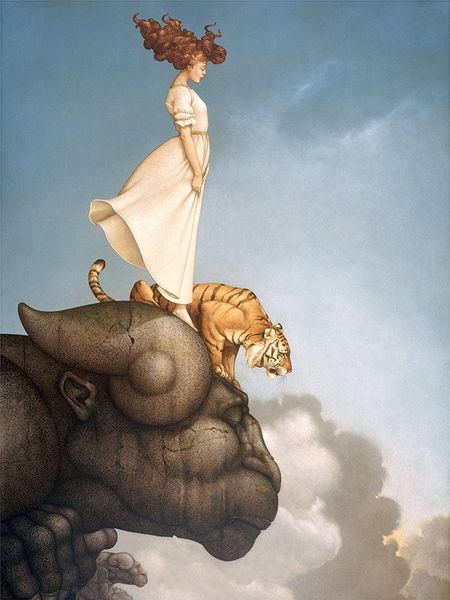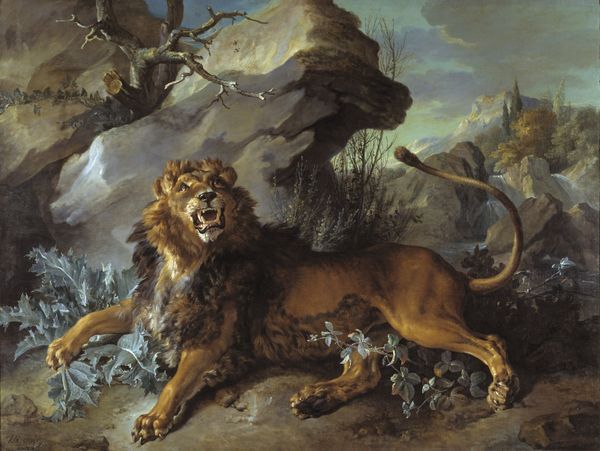
painting, oil-paint
#
painting
#
oil-paint
#
landscape
#
fantasy-art
#
figuration
#
oil painting
#
naive art
#
surrealism
#
surrealism
Copyright: Arsen Savadov,Fair Use
Curator: Arsen Savadov's "The Sorrow of Cleopatra," an oil painting from 1987, is what we're looking at. Editor: I'm immediately struck by its arresting visual vocabulary. It’s got this dreamlike quality... Powerful yet oddly unsettling, wouldn’t you say? Curator: Absolutely. We need to consider Savadov's context—this piece emerges from the late Soviet period, Ukraine. Cleopatra becomes a contested symbol here. The work explores power, gender, and historical narratives within shifting political realities. Is she a fallen icon, a victim of circumstance, or a figure of enduring resilience? Her sorrow, painted at this time, feels heavy with the weight of a nation on the brink of change. Editor: Yes, but what I'm most drawn to are the raw materials: the application of the oil paint, creating texture and vibrancy—you can almost feel the texture of the tiger’s fur. The surface is built up, layer upon layer. The act of creation here is critical, almost aggressive in its materiality. How might this reflect on labor, especially artistic labor, in the Soviet system? Curator: That's a key point. Consider, too, the visual juxtaposition of Cleopatra as a mythological figure alongside the realistic rendering of the tiger and somewhat barren landscape. There's tension between classical representation and something far more primal and immediate. She is riding a beast of labour, and the question becomes what action and freedom this Sorrowful figure is able to access riding her tiger in this strange and difficult terrain. Editor: And that raw handling of the paint, almost naive in its execution, it challenges notions of what’s "high" art versus what is not, questioning value. Is this celebration, satire, or both? And how does the Soviet context define those concepts in a very specific way, as art for the people or a cry against oppressive authority. Curator: Precisely. We're dealing with multifaceted symbols, reflections of societal anxieties and longings. The work resonates not merely as a historical artifact, but as a deeply personal commentary on female power and agency within patriarchal structures. Editor: Indeed, the crude production of this piece in this time only furthers the conversation of value and commodification, not just from a production context, but on the subject of the artist, too. Curator: In the end, this Cleopatra's sorrow becomes our own. Editor: Yes, reflecting perhaps that we continue to grapple with similar struggles even now.
Comments
No comments
Be the first to comment and join the conversation on the ultimate creative platform.
